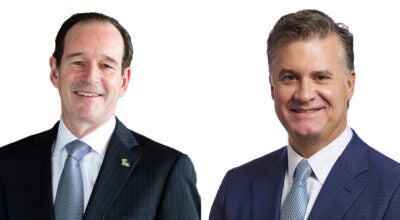Looking for the union label
Published 12:00 am Wednesday, February 11, 2004
Edwin Feulner-Heritage News Forum
It’s almost a rite of passage. Politicians go to great lengths to woo labor unions and proudly advertise any endorsements they get.
But if recent returns are any indication, those endorsements aren’t worth fighting for-at least, not if you want votes from rank-and-file union members.
In the Iowa Democratic caucuses, the nation’s big manufacturing unions threw their support-and their money-behind Richard Gephardt, while the important (and growing) public-sector unions put their cash on Howard Dean. But union members had a different idea.
Of those union members voting in the Democratic primary, a plurality, 29 percent, ignored their union’s advice and supported Sen. John Kerry. Dean managed 22 percent, while Gephardt, despite strong and early union backing, had to settle for 19 percent. A similar thing happened in New Hampshire, when 41 percent of union members voted for Kerry. Only 25 percent cast ballots for Dean, although he enjoyed the support of the state’s largest union.
Clearly, labor unions are taking money from members and spending it on political candidates that many, if not most, of their members oppose. But that may soon change.
The Department of Labor is getting set to implement a new rule that would improve the annual financial disclosure forms unions must file with the federal government. Under this rule, the nation’s biggest unions would have to explain, in writing, when they spend more than $5,000. That means labor union members would get a clearer picture of what their union supports.
As Labor Secretary Elaine Chao put it, the “current forms unions file provide little of value to rank-and-file members about their union’s finances and operations.” Considering they’re tending to vote for candidates not backed by their unions, the dues-paying members likely would be interested in better disclosure.
Chao, a former distinguished fellow here at The Heritage Foundation, wants what we all do: to empower American workers. Allowing union members to know how their dues are being spent would be a good first step.
This sensible new rule also would allow union members to learn about the large trusts their unions control. These so-called “joint funds” are usually used as retirement accounts, but they generally have no financial accountability to union members. In fact, many members aren’t even allowed to know what their union is investing in. That must change.
Unlike so many union investment decisions, the government’s new transparency rule wasn’t crafted in the dark. The Labor Department sifted through some 35,000 public comments about them and revised the rule in response to those comments.
For example, to protect smaller unions, only those with $250,000 or more in annual receipts will be required to fill out the new disclosure forms. And to make the transition easier, unions won’t be required to actually file a report under the new reporting rules until March 2005. Plus, the government is developing reporting software, which it will provide free to unions.
This important new rule recently survived a critical test. In a suit brought against the government by the AFL-CIO, U.S. District Court Judge Gladys Kessler ruled that the Labor Department has the authority to issue the transparency rule, adding that the rule “is reasonable, adequately explained, and not arbitrary or capricious.” Big Labor certainly will attempt more legal maneuvering, but Judge Kessler’s ruling shows it’ll have a tough time derailing this important and reasonable transparency rule.
In this election year, many union members are undoubtedly wondering why their leaders are spending so much to support candidates that they and their fellow local members don’t support. Before long, they may get some answers.
Ed Feulner is the president of The Heritage Foundation (heritage.org), a Washington-based public policy research institute.




